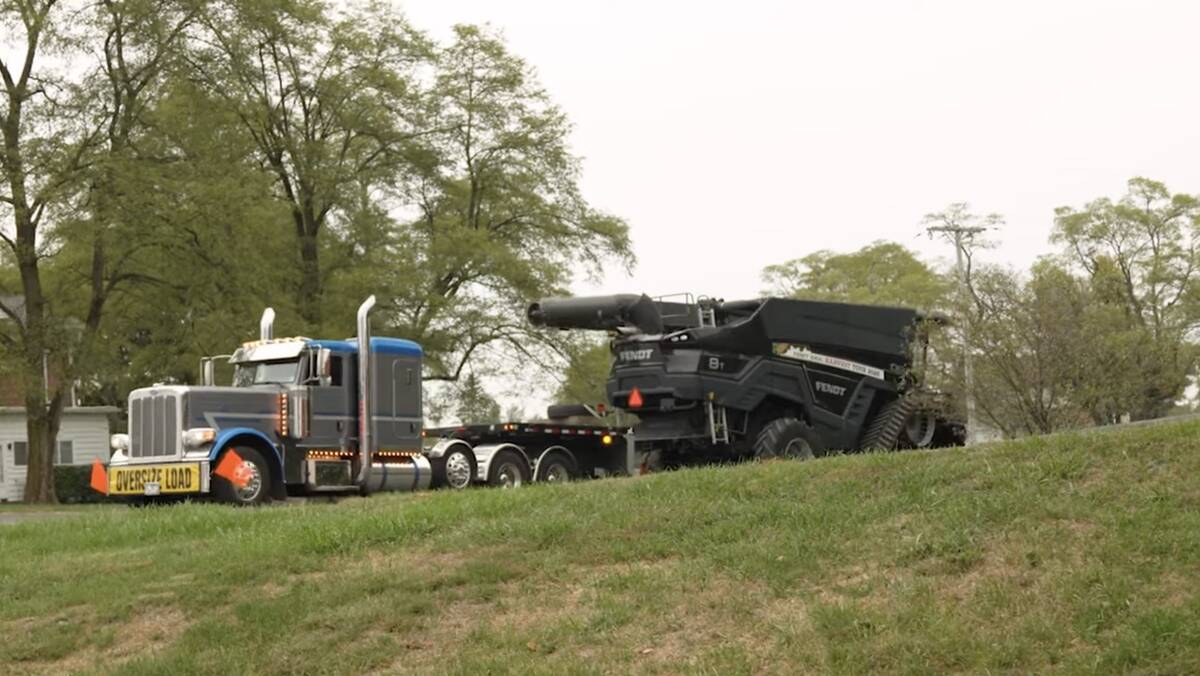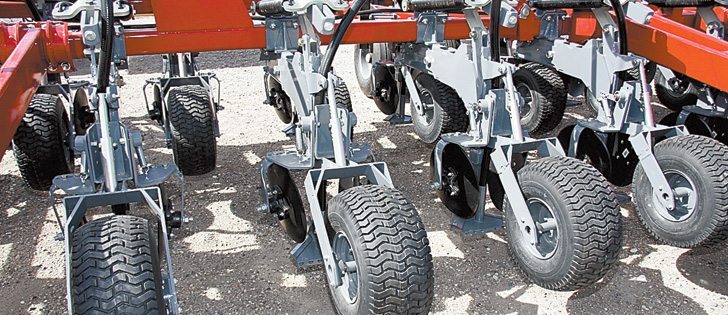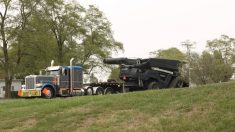Ag Systems gives seeds plenty of breathing room
The first Ag Systems customer averaged a four to five bushel wheat benefit and a three to four bushel soybean benefit compared to his neigh-bours.
LeRoy Richard has sold all four of his prototypes, and they’re all in use on farms today.
His first prototype was a 30-foot unit purchased by distant relative Larry Richard, who has seeded six crops with it.
Larry farms Red River Valley clay south of Fargo, North Dakota. Until his recent switch to a straight corn/soybean rotation, he had used the drill to seed 600 acres of wheat per year plus 1,000 acres of soybeans.
Read Also

Fendt takes a combine on the road in the U.S.
Putting an Ideal combine in fields across different regions has given the brand a chance to prove that the combine is capable of performing well in a variety of conditions.
“We’re getting better yields because we always have better germination. Germination is where it all starts,” he said.
“With the Ag System, we’re not piling the seeds on top of each other. There’s a nice wide ribbon. There’s plenty of ground so they’re not fighting each other for moisture, sunlight and nutrients.”
Larry said the soil feels loose in fields seeded with the Ag Systems drill. There is no crust.
He said he particularly noticed the difference six years ago when he did plant population counts for the first time.
“First, I checked a field seeded with a planter. You kneel down on a hard surface when you’re counting. Then I went to a field seeded with the drill from LeRoy. Your knees just sink into the soil. It’s so soft and mellow. That’s when it really hit me. Soil like that has to be better for the roots.”
In a 2006 field trial, Larry planted corn with a corn planter equipped with a conventional singulator. LeRoy planted corn with the Ag System drill without a singulator.
“Any self-respecting corn grower would say, ‘that’s crazy. You can’t grow a good corn crop without a singulator.’ But we did it anyway,” LeRoy said.
He used corks to plug two outside holes of the opener so that he was running only a six-inch ribbon with seed and fertilizer.
At harvest time, the dedicated corn planter scored 172 bushels per acre, while the corn seeded with the Ag Systems drill, without a singulator, scored 205 bu. per acre.
Now that Larry no longer grows wheat, his Ag Systems drill has been relegated to the role of heavy tillage tool, with a four-inch twist shovel he runs eight inches deep to work corn stalks into the ground.
He also uses it to apply fertilizer, putting down phosphorus with the wide sweep opener while banding anhydrous ammonia. His NH3 setup uses a 20-inch Clymer coulter followed by a narrow knife. He can also set it up for urea if the need arose.
He said it takes two guys about two hours to switch the machine from one set of tools to another. It takes a little longer to hook up the NH3 because of the hoses.
Many producers in the Red River Valley found it impossible to get their tillage tools in the ground last year.
“We had no penetration problems on our corn ground. We were able to get down to eight inches easily,” Larry said.
“But we did have some issues on our soybean ground. It was so hard we ended up quitting. We have had some problems with the packing wheels mudding up when it’s extremely muddy. When that happens, we just don’t use them. Instead, we follow up with a Phoenix harrow.”
















